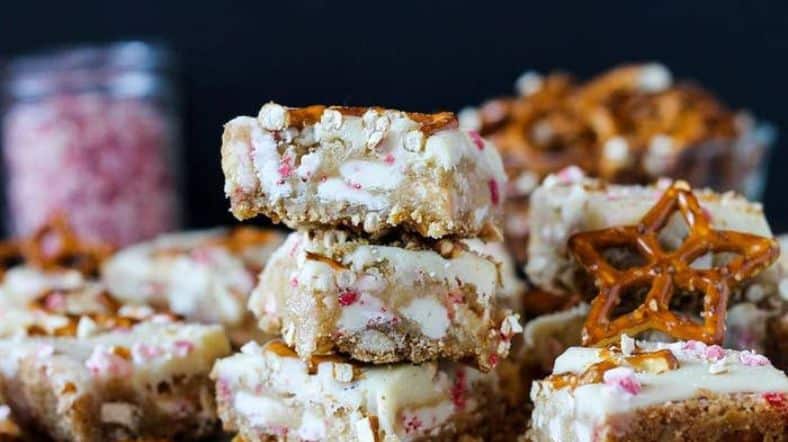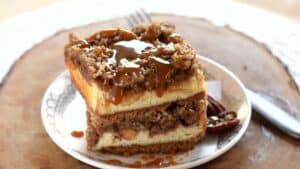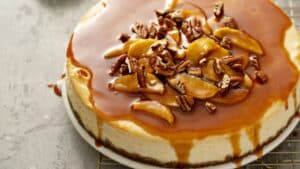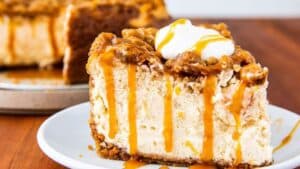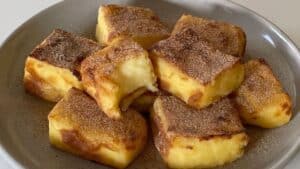Most holiday cookie trays are just beige sugar-laced clichés. Not these. Peppermint Hot Cocoa Cookie Bars are a punch in the taste buds, a balancing act of texture, flavor, and sheer seasonal nostalgia that deserves more than just a spot on the dessert table they deserve reverence.
This ain’t your everyday peppermint bark or cocoa mix. We’re talking about a composed, structured, flavor-layered bar that combines the sensory thrill of peppermint with the warm, fuzzy indulgence of hot cocoa, all tied up in a chewy, fudgy cookie base that’s just shy of magic.
For pastry chefs, bakers, R&D professionals in commercial food manufacturing, and culinary educators alike, understanding how to execute and innovate on something like this isn’t just festive fluff—it’s an exercise in sensory synergy, structural integrity, and emotional evocation through flavor science.
Let’s pull it apart, layer by layer.
What Actually Is a Peppermint Hot Cocoa Cookie Bar?
First off, let’s define the dish. These bars typically start with a dense chocolate cookie base, not unlike a brownie but with more bite. It’s layered or swirled with peppermint-infused chocolate or marshmallow cream, sometimes topped with crushed candy canes and finished with a drizzle of ganache or white chocolate.
This isn’t a fixed formula, but rather a modular idea. Think chocolate-peppermint-mallow as the core trio. It’s a sensory build—a crunch, a chew, a melt. That’s the point.
And when it’s done right, the eater doesn’t just taste winter—they feel it.
The Flavor Matrix: Peppermint Meets Cocoa
Chocolate and peppermint is a classic pairing, but here’s where people usually screw it up. Peppermint is a high-volatility essential oil; it’s a top note. If you overdo it, it mows down everything in its path like a flavor bulldozer. Underdo it, and the chocolate just steamrolls right back.
Professional pastry chefs know that the key to balance is fat. Cocoa butter in chocolate acts like a buffer. It mellows the sharpness of peppermint. But if you’re using Dutch-process cocoa (which is less acidic and smoother), you’ll need to pump up the peppermint just a tick more to balance the lower brightness.
Don’t even think about using artificial peppermint extract. Use natural peppermint oil—0.1 to 0.3% of total weight. That’s it. Anything more and your bars will taste like toothpaste. Seriously. I’ve seen hotel pastry teams blow thousands in product loss just from overzealous extract usage.
Let’s Talk Structure: Layering for Performance
The base layer—this is your platform. It has to support multiple textures without getting soggy or tough. A typical brownie-style cookie dough works, but you want to reduce egg and sugar a bit to avoid a cakey result.
Fat content here matters. Professional bakers often shoot for a fat-to-flour ratio of 1:1.2 for optimal chew with enough stability to hold marshmallow or ganache layers. Use brown sugar, not white. The molasses helps with moisture retention over days—which is huge for shelf life in commercial environments.
The middle layer? Marshmallow or peppermint cream. This layer adds vertical contrast—a texture flip. It should be spreadable but settable. I’ve had success with stabilized marshmallow fluff mixed with gelatin bloom and a touch of invert sugar for elasticity.
Top layer, you’ve got options. Some go with a simple ganache drizzle. Others with white chocolate shards and crushed peppermint. Here’s a tip: temper your white chocolate if you’re using it as a final coat. Untempered white chocolate will bloom and flake. Tempered will snap and gleam. Makes a world of difference.
Textural Play: Why These Bars Work
Professional baking is all about mouthfeel. A great dessert plays on contrast—soft against crunch, smooth against chew. These cookie bars nail that when they’re built right.
Take the peppermint candy topping. You can’t just bash candy canes and toss ‘em on. They’ll melt or sweat, especially in humid environments. A better technique is to coat crushed candy in cornstarch or powdered sugar. That wicks moisture and keeps the crunch.
In large-scale production, freeze-dried peppermint chips are your friend. They hold up better in packaging and have more consistent flavor release.
Meanwhile, marshmallow is your “melt” texture. It bridges the chew of the cookie base and the snap of the chocolate. Without it, the bar feels one-dimensional. With it? It’s dynamic.
The Emotional Angle: Flavor and Memory
Peppermint is memory. Cocoa is comfort. When they come together, you’re not just making a dessert—you’re crafting a feeling. That’s huge in product development.
Research from the Journal of Sensory Studies (Vol. 33, Issue 5) shows that peppermint triggers stronger emotional response in memory recall tests than cinnamon, clove, or nutmeg. Cocoa, on the other hand, shows a high correlation with serotonin and dopamine spikes due to its phenylethylamine content.
Put simply? These bars hit the brain in all the right spots. That’s why they move like wildfire at bake sales and bakery counters. That’s why CPG brands lean hard into peppermint cocoa SKUs every Q4.
Common Pitfalls: Where the Pros Slip Up
Let’s be honest, even great chefs get too clever sometimes. Here’s where I see pros trip over themselves:
- Overflavoring – Peppermint should whisper, not scream.
- Poor layering – Marshmallow too thick, base underbaked. Result? Goo mess.
- Unstable toppings – Crushed candy + humid bakery = sticky disaster.
- No shelf-life planning – These bars can keep 5–7 days if layered smart and wrapped right. But if you don’t moisture-proof that top layer? Say goodbye to texture.
And for the love of ganache—don’t freeze them unless you’ve tested the freeze-thaw behavior of your mallow. It goes gummy fast if you’re not stabilizing.
Scaling It Up: Commercialization Considerations
Let’s talk scale. If you’re taking these bars into commercial production or foodservice environments, you’ve got a whole new set of constraints.
Packaging: Clear top PET trays work, but you’ll need a moisture barrier on the lid if you’re using marshmallow or candy toppings. Try a polypropylene seal with low MVTR (moisture vapor transmission rate).
Shelf stability: Use glucose syrups instead of honey or corn syrup in your marshmallow. Better crystallization resistance. And always test in 45–65% humidity chambers.
Labor: If you’ve got 1000 bars to finish and hand-piping is on your SOP, you’re gonna bleed margin. Use stencil templates for drizzle or switch to pre-cast decorative chips. And if you need shelf-life past 10 days? Ditch dairy ganache. Go compound coating with flavor emulsions.
Innovation Trends: Where the Category Is Going
Here’s the real scoop—innovation’s not just about flavor anymore. It’s about story. And this bar has a helluva good one.
Emerging brands are playing with:
- Nitro-infused cocoa drizzle for mousse-like toppings.
- CBD-infused peppermint oils (still murky legally, but trending).
- Vegan aquafaba-based marshmallow layers that perform near-identically to gelatin mallow.
- Fair trade and origin-specific cocoa bases with terroir storytelling.
One small-batch bakery in Portland layered their bar with a Peruvian 70% dark chocolate base and crushed pink peppermint grown in micro-farms in Washington. Charged $7 a square. Sold out for weeks.
FAQs and Misconceptions
Q: Can I use mint instead of peppermint?
A: Please don’t. Mint is vague. Peppermint has a sharper, cleaner profile and higher menthol content. You want that snap.
Q: Why not use fresh peppermint leaves?
A: Because you’re not making tea. Peppermint oil gives concentration, consistency, and clarity. Fresh herbs in bars? Weird chew, zero control.
Q: Can these be gluten-free?
A: Yep. Use a rice flour-sorghum mix with xanthan gum. But you’ll need to rebalance moisture content. GF flours hydrate differently.
Final Thoughts: Let the Bar Speak
Peppermint Hot Cocoa Cookie Bars aren’t just another holiday novelty. They’re a perfect case study in dessert architecture—flavor balance, texture science, emotional evocation, and shelf-life strategy all packed into one little square.
For culinary professionals, this is the type of dessert that challenges your fundamentals while offering room to flex creative muscle. You want a dessert that flies off shelves, melts hearts, and leaves a lingering note of wonder?
Start here. But for god’s sake, measure your peppermint oil.
Actionable Takeaways:
- Target peppermint oil dosage at 0.2% for balance.
- Build layers for moisture management and mouthfeel.
- Use stabilized marshmallow or freeze-dried components for shelf life.
- Explore origin-based chocolate and innovative toppings to differentiate.
- Always test under real-world storage conditions before scale-up.
And hey, next time someone asks for a holiday treat, don’t give them the same old cookie cutter stuff. Give them a bar. A peppermint hot cocoa cookie bar.
And make it unforgettable.
